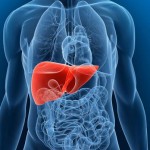Galectin-3 is a protein, made predominantly in immune cells in the body, which binds to specific sugar molecules attached to many other types of proteins (called glycoproteins). By binding to glycoproteins, galectin-3 has many effects, such as modulating the interaction of cells and receptors, the immune response, the behavior of cancer cells, inflammation, and scarring of organs. Galectin Therapeutics has a lead drug compound that inhibits galectin-3 binding in an attempt to treat diseases (fatty liver disease and liver fibrosis, psoriasis, and cancer) that are dependent on galectin-3 action.
An important new research finding, published on November 3, 2016, in the scientific journal Cell, adds adult onset (type II) diabetes to the list of disorders with galectin-3 as a culprit (Li, P. et al. (2016) “Hematopoietic-derived galectin-3 causes cellular and systemic insulin resistance” Cell 167, 973-984). While this research was done in mice and therefore early, I believe it has potential important implications for human diabetes.
First, some background. Insulin is a peptide hormone made by cells in the pancreas secreted into the bloodstream to ultimately bind to the insulin receptors on many types of cells in the body. Insulin regulates energy utilization and metabolism in muscle, fat, and liver cells, which has the result of regulating the level of the blood sugar glucose.
Diabetes occurs when the blood glucose is not regulated effectively and is elevated above normal levels, which over time can lead to multiple complications. Type I diabetes, also called juvenile diabetes, occurs when there is an absolute deficiency of insulin due to reduced production by a damaged pancreas. Type II, or adult-onset diabetes, is associated with obesity and occurs when there is a relative deficiency of insulin due to resistance of target cells to the effects of insulin.
Insulin-resistance is the hallmark of type II diabetes. Because of this insulin resistance, insulin levels are actually increased in early stages of diabetes, but the pancreas loses the capacity to keep up production and insulin levels are eventually reduced in later stages of type II diabetes. One factor that seems to be involved in dysfunction of insulin receptors is the presence of inflammation, or immune cell infiltration, in fat tissue. This is where galectin-3 comes into play.
The study published in Cell shows that galectin-3 produced by macrophages (immune cell) binds to and inhibits the function of the insulin receptor, causing insulin resistance. The investigators demonstrated that removal of the galectin-3 gene or treatment with a galectin-3 inhibitor reduces insulin resistance in mice. In addition to revealing another factor involved in insulin resistance, this work demonstrates a direct link between an inflammatory cell protein, galectin-3, and dysfunction of the insulin receptor.
A beautiful aspect of science is how many findings from different perspectives can work into a tapestry that describes a much bigger picture. Insulin resistance in liver cells is a critical component of fatty liver disease, or non-alcoholic steatohepatitis (NASH), which is an enormous global medical problem. Our own research has shown that galectin-3 is increased in NASH livers. The new work on the effect of galectin-3 on insulin receptors adds another potential mechanism in the tapestry of the cause of NASH. Additionally, it provides another mechanism for the activity of our galectin-3 inhibitor GR-MD-02 in treating NASH as we have shown in animal studies and are studying in human clinical trials.
So, what does this all mean for diabetes and development of anti-galectin-3 drugs? If these studies are confirmed and extended to human disease, the galectin-3 link between inflammation and insulin resistance could represent an important new target for treatment of type II diabetes. At the present, there are no reported anti-galectin-3 drugs that are active by oral administration, which to my mind would be important for a diabetes indication. However, with this new finding, the search for such agents is likely to heat up. In this regard, Galectin Sciences, LLC, a wholly owned subsidiary of Galectin Therapeutics was formed in 2014 (see press release) for the purpose of discovering orally active galectin-3 inhibitors.
These “CEO Perspectives” are a regular feature of our communication activities and may contain forward looking statements within the meaning of the Private Securities Litigation Reform Act of 1995, including whether GR-MD-02 may be effective in the treatment of NASH. These statements relate to future events and use words such as “may,” “might,” “could,” “expect” and others. For a discussion of additional factors impacting Galectin’s business, see the Company’s Annual Report on Form 10-K for the year ended December 31, 2015, and subsequent filings with the SEC. You should not place undue reliance on forward-looking statements. Although subsequent events may cause its views to change, management disclaims any obligation to update forward-looking statements.





